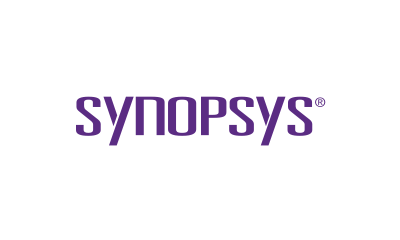How Digital Transformation and Innovation Can Help Your Small Business Grow
Posted by Tech.us Category: Business Growth, Business Trends
The past three decades have seen a rapid shift in the way we do business. The ’90s were a time of innovation in new technologies, specifically the internet, that kick-started the current technological climate. The first decade of the 2000s saw the introduction of the Blackberry, which changed the way we think about communications.
By the time the iPhone was introduced, most businesses had transitioned to a digital platform of some kind to manage their communications, marketing, billing, or collaboration. However, most hadn’t implemented all of the tools they needed. The move from a hardware to a software focus over the years meant better tools at lower prices for businesses of all sizes.
While some CRM tools and databases like Oracle were out of reach for small businesses in the past, innovation brought costs down, opening up powerful technologies for small and medium-sized businesses (SMBs). Today, the shift to social marketing, remote working, and 24/7 connectivity and collaboration has changed the way businesses operate and interact with their customers.
If your business hasn’t implemented most or all of the key tools for digital transformation, you’re already behind. A successful transition to the new digital economy is necessary for everyone, whether you’re an app developer or a company that manufactures skylights. As distributed teams, suppliers, and smart logistics become the norm around the world, innovation is necessary to ensure your business can keep up and increase growth rates. Here are some of the areas to pay attention to.
The Internet of Things (IoT)

Connected devices and appliances are already invading our homes, listening to our conversations, and predicting our behavior, but Alexa and other smart home devices are just the beginning. Connected businesses need connected processes, and IoT services and products are critical to productivity and efficiency.
Trucks
Need to get your shipments out as fast as possible and track your drivers? Equipping trucks with software built for remote monitoring means no more calling your drivers to figure out where they are and getting an ETA. Let the software tell you everything you need to know, including estimated travel times, by automatically aggregating data from GPS and traffic reports.
Connected Equipment
IoT can connect everything essential to your business, meaning easier and more in-depth monitoring and the ability to make adjustments on the fly. Owners of SMBs can invest in manufacturing, printing, prototyping, simulation, and order flow equipment that seamlessly tracks and manages progress across production areas. If you take advantage of this tech, you can reap the rewards with higher efficiency and lower margins of error in every aspect of your business.
Data and Analytics

Instead of guessing and projecting your numbers, you can crunch data automatically with AI-powered accounting software. Take the extrapolations from past data and industry standards and get a quick estimate on what you’ll need for capital expenditures, supplies, and other quantifiable costs. The need for digital transformation means a shift toward quantifying aspects of your business in detail so that you can make better and more informed decisions.
Experience-Based Marketing
Instead of putting up a billboard or pushing internet ads out as frequently as possible, why not engage with your potential customers? Innovation in marketing in the digital age means interacting with the customer to make them feel like they are a part of the experience.
In-Game Marketing
Placing your products, logos, or skins (designs for virtual products reflecting your actual designs) gives you the opportunity for product placement directly in the sightlines of thousands of people. First popularized with Pokemon Go (an augmented reality game), companies can advertise by placing themselves in the game. They could even direct augmented-reality players in the direction of their stores or other locations. Imagine having a player walking around your city on a virtual scavenger hunt, and one of the clues leads them right into your cafe! Direct foot traffic and digital exposure are critical in this era of hyper-connectivity, transforming games into something more than just the reserve of teenagers killing time.
Creating Virtual Experiences

If you had to choose between two identical products, and couldn’t decide, then the tipping point might be a bonus virtual experience. Buying a pair of shoes, a watch, or a car could mean gaining access to an exclusive members club, which customers can access at home for more content, information, and interaction with other customers. They could chat and walk around in a virtual world with other like-minded customers, building brand loyalty along the way. Instead of sending out newsletters to build repeat sales, creating organic online experiences is an effective way to get your customers to keep engaging with your brand and products.
Implementing Essential Tools for Innovation

What used to qualify as an essential business tool has changed drastically, particularly over the course of 2020. As remote working and online services have become the norm, the tools you use to operate your business must adapt as well. While a printer, business card, and multiple printed drafts may have worked in the past, digital transformation has pushed work in an entirely new direction, faster than ever before.
Messaging
Communication was so simple when everyone was in the office. You could lean back in your chair, yell down the aisle, and talk to your coworker. Separated by a lot more physical space when you are working from home, you and your collaborators need new tools that are essential to communication.
The use of workplace collaboration and communication software like Microsoft Teams, Zoom, and Slack has grown rapidly and continues to accelerate. Instead of a long and often confusing email thread, why not open some threads on Slack for different topics, instantly networking your entire workforce? If you implement cloud-based communication software as an essential tool at your company, collaboration will be faster and easier.
Cloud-Based Files and Working Together
Working remotely means you can’t just pass the file to your coworker in the next cubicle or office. You need to get it to them faster and see the changes they are making. Using tools like Google Docs, Sheets, and Slides means you can collaborate with multiple people on the same document, making suggestions and changes faster than ever.
With the ability to put notes in the margins to reference a specific area, team collaboration is easier than ever, even though your team is distributed across different locations. You can even hire some of your workforce from regions beyond where you are physically located to take advantage of a larger candidate pool and different labor markets.
Video Conferencing

Nothing can replace the experience of being in the same room, chatting over a coffee, and brainstorming the afternoon away. Some of the best organic ideas come from the random and unplanned interactions we have just by being in the same place. Still, just because you can’t be in the same room as your team doesn’t mean you are not connected.
The early days of video conferencing were brutal. Slow connections, bad image quality, constant freezing, and interruptions were the norm. Now, with faster internet speeds, faster computers, and light but powerful video conferencing software, the experience is better than ever. It is essential to be able to communicate with your team, and even more essential to see them from time to time (or all the time if you prefer).
Nothing beats having a conversation face to face, and video conferencing with one or more people is the tool to accomplish that while working with a distributed workforce. If you implement good software and video conferencing practices, you can also collaborate on documents and give presentations with this technology. You’ll save steps, time, and money over the short and long term.
HR Management Software
Gone are the days of writing physical checks to pay your employees and putting hiring and firing information on paper. With a workforce that is working from home, HR management needs to go digital as well. If you can find the right software for your HR department or even yourself (if you prefer to do the hiring), you can expand your options for recruiting and make the process more seamless. Tracking interviews, managing onboarding, and keeping everything organized come tax season is a lot easier, making HR management software absolutely essential for digital transformation.
Accounting Software

This goes without saying, but let’s say it anyway. Accounting software is essential and has been for a long time. If you don’t have accounting software, get some now. Off the shelf software like Quickbooks is faster and more powerful than any manual calculations. You can keep costs low by managing all your accounting (expenses and revenues, plus payroll) all in the same place, managed by a single person.
AI-powered software is the best option, giving you predictive capabilities and insights that might be missed when doing it manually. Getting accounting software in place (preferably cloud-based) will increase your efficiency and lower slippage and mistakes when managing your business’s finances.
Project Management Software

Any business managing a team working on multiple projects needs project management software. While qualifications in the software used to be essential, with a little practice and training, any employee well-trained in management practices can get the most out of the power of project management software.
Agile frameworks and cloud-based, easy to understand interfaces allow your team to track progress, move between processes, and keep everything on track. By implementing project management software, progress is tracked automatically with detailed lists of tasks divided by team members and the time that they take. The upfront investment is minimal, and you can try some software for free like monday.com and Asana.
Website Performance Monitoring
You might not be ready to design and build a website from the ground up, but once your website is up and running, you need to know how to optimize it. Keeping track of website performance and stats ensures that you know where people are clicking and how many people are getting to your website. Whether your website is using best practices in SEO and content flow will make a big difference in how effective it is at directing customers.
You should know whether customers are clicking past the homepage and learning about your business or losing interest after the first few paragraphs. If you optimize your site and advertising practices, you will drive more traffic to your website, keep customers on it longer, and achieve higher conversion and growth rates.
All of these tools and more are essential to innovation in your organization. Companies that fail to implement them are often less efficient and less competitive. It may not have been necessary for you to have some or all of these tools in the past, but business has changed forever, and there is no going back. Messaging, collaboration, back end development, databases, websites, and accounting are all part of the digital transformation sweeping the economy right now. Businesses in every industry need to take note and get started on transforming their businesses and the way they work.
Investing in Innovation

IT investment is increasing every year, and “Gartner suggests that 25% of average IT budgets are currently spent on capital expenditure. For this reason, CIOs must optimize how their IT spend is allocated.” (ITBrief) Whether you have a few thousand or a few million to spend on digital transformation for your business, making sure you are optimizing your dollars is essential.
Focus on the Future
While it is tempting to solve problems now, and you can’t stop fixing issues as they arise, focusing on the future is the key to innovating. Plan ahead by investing in technology that may not be essential at the moment but likely will be in the future. AI and machine learning are set to change the game completely and already are. Start now by focusing on AI-based needs for your company in the future so you won’t be left behind.
Start With Your Weaknesses
Take an honest look at the areas of your business that are underperforming, and focus your IT investment there. If your production processes are running smoothly but clients are getting shipments at irregular intervals, implementing networked shipping software (IoT) should be your priority. If managing your current clients’ needs is going well, focus on website stats and advertising. If you prioritize your IT spend, you’ll get more out of your budget, whatever that may be.
Strive for Independence
Being an entrepreneur means juggling, having a lot on your plate, being a jack-of-all-trades, and whatever other metaphor you fancy. In the past, this meant being reliant on suppliers and third parties to manage different parts of your business. Innovation in digital transformation means this is no longer necessary.
Bring It In-House
With low entry costs, easy implementation, and automated operation, most of the technology you need can replace many of the functions you might be outsourcing. Bring your accounting, marketing, and project management all under one roof (your own) and your business will become more independent. Digital transformation can empower your business!
Training, Training, Training

Keep your knowledge base and skills up-to-date, both for your own sake and the sake of your employees. Your business is better off with well-trained workers who know their way around the technology that makes your business more profitable. As an entrepreneur, you are already well-versed in the paths to learning skills by yourself. Make sure the people that work for you can do the same, so they can maximize the tools that power your business’s digital transformation.
The Future is (Blindingly) Bright
Just stop for a moment and take a look at everything you have accomplished. You have started and grown your business, taken it from point A to B to L by way of point G, and had to innovate and adapt every step of the way. Your ability to transform has made your business more successful.
Digital transformation is the next phase for you and everyone you are competing with. Implementing new tools, mastering them, and switching seamlessly between them will give you a leg up on your competition and the industry overall.
The pandemic of the past year has shown us that productivity and success do not need to be put on hold just because we are unable to sit across the conference table from one another. Remote working, and in some cases, 100% distributed teams are not the future — they’re here. It’s happening right now.
Putting strategies and tools in place to keep up should be everyone’s priority, and as soon as you can, you should look into the future. What are the future technologies necessary to your company’s success? How can you start implementing them now instead of waiting until it is too late? The forced shift to remote working has meant that most businesses have been reacting to digital transformation. Now is the time to get ahead of it and change to a proactive strategy.
If you haven’t started with your digital transformation, there’s still time. You can take any or all of the ideas and strategies mentioned in this article and get on the path toward innovation. Choose a provider and consultant that can guide you along the way, and you’ll be speeding into your future as a well-oiled, digitally-powerful, and profitable business machine.

Trusted by:






We are a team of technology experts who are passionate about what we do. We LOVE our customers. We LOVE technology. We LOVE helping you grow your business with technology.
Our Company
Our Services
Talk To Us
We are a team of technology experts who are passionate about what we do. We LOVE our customers. We LOVE technology. We LOVE helping you grow your business with technology.
